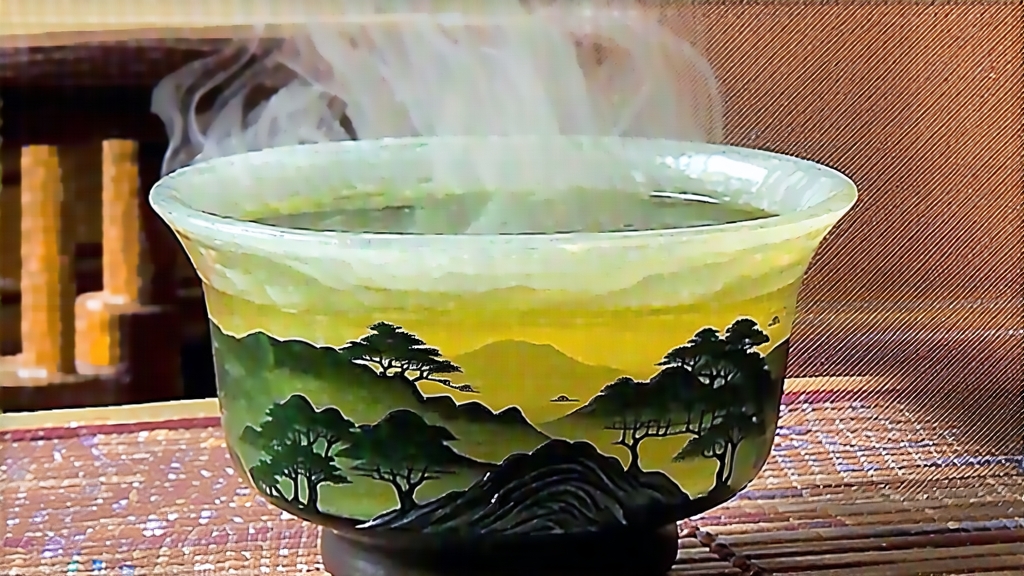
Few leaves in the world carry as much poetry, folklore and sensory drama as Tie Guan Yin, the “Iron Goddess of Mercy” from southern Fujian. To the Chinese tea mind she is not merely an oolong; she is a bridge between earth and heaven, a sip of Guanyin’s compassion filtered through centuries of craft. International drinkers often meet her first among oolongs, yet rarely taste the full arc of her story—from Qing-dynasty accident to modern green-style revolution—because the name “Tie Guan Yin” now adorns everything from lightly scented bags to heavily roasted bricks. This essay invites you to travel deeper: into the granite ridges of Anxi County, into the rhythm of 24-hour leaf transformation, into the quiet art of listening for what locals call yun, the lingering echo that proves you have met the true goddess.
-
Historical roots: when iron met mercy
Legend places the birth of Tie Guan Yin around 1725–1735, during the reign of Emperor Yongzheng. A poor farmer named Wei Yin in Anxi’s Songyan village found a deserted shrine to Guanyin, the Bodhisattva of Compassion. After repairing the statue and sweeping the courtyard he prayed for solace. That night, in a dream, Guanyin pointed him toward a cave behind the shrine where a single tea tree shimmered with iron-green luster. Wei transplanted it to his field; the tea it yielded was so fragrant that neighbors believed the goddess herself had infused the leaves with mercy. Wei shared cuttings, and the cultivar—soon named “Tie Guan Yin” to honor both its metallic sheen and divine origin—spread throughout Anxi’s highlands. By the late 19th century Anxi merchants were carrying it down the Min River to the treaty port of Xiamen, where foreign firms shipped it to Singapore, Saigon and even San Francisco, embedding the goddess in global maritime memory. -
Terroir: granite gardens above the clouds
Anxi lies 25° north, where subtropical humidity collides with mineral-rich uplifts. The core micro-region, known as “Nei Anxi” or Inner Anxi, rises between 600–1,200 m in the Xianghua, Gande and Xiping townships. Here decomposed granite soil drains fiercely, forcing tea roots to dive deep for nutrients; morning fog slows photosynthesis, concentrating amino acids; and the diurnal swing can exceed 10 °C, thickening leaf cuticle and locking in aromatic precursors. Within this zone, single villages have become celebrities: Xiping for creamy florals, Gande for cooling orchid notes, Xianghua for a whisper of clove. Purists speak of “rock yun” borrowed from Wuyi jargon, yet Anxi’s yun is lighter, more aerial—like the echo of temple bells rather than the thud of bronze drums. -
Cultivar lineage: the mother tree and her children
All authentic Tie Guan Yin derives from a single biotype, Camellia sinensis var. sinensis ‘Tie Guan Yin’. The original “mother tree” still stands in Songyan, protected by a fence and visited by horticultural pilgrims. Through successive generations farmers have selected two stable clones:
• Red-heart Tie Guan Yin (hongxin weidao) – traditional strain, reddish petiole, broad leaf, ideal for medium-heavy roasting.
• Green-heart Tie Guan Yin (lvxin weidao) – narrower leaf, paler vein, higher amino content, favored for modern light oxidation.
Both strains share a peculiar trait: the fresh leaf exudes a raw pea-and-magnolia aroma that oxidizes into the signature “Guanyin charm.” -
Craft: the 24-hour living choreography
Making Tie Guan Yin is less a recipe than a dance whose tempo changes with humidity, leaf plumpness and even the maker’s mood. The following timeline is therefore an idealized score; masters improvise like jazz musicians.
Day 0, 08:00 – Picking
Only the open-face standard: top bud plus two or three semi-mature leaves, when the serrations turn blush-green and the leaf back shows a fine down. Pickers finish before noon to avoid afternoon bitterness.
Day 0, 10:00 – Sun-withering
Leaves are spread on bamboo mats under 70 % sunlight for 20–40 min, turned every ten. The goal is to shed 8